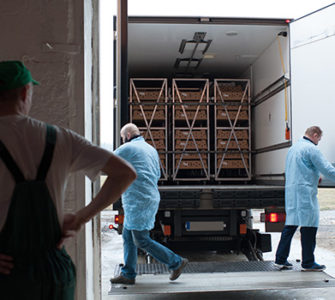Biosecurity expert sees more room for improvement on poultry farms
Biosecurity on commercial poultry farms has come a long way but still has far to go, Joseph Giambrone, PhD, professor of poultry science, Auburn University, told Poultry Health Today.
Maintaining flock welfare and reducing economic losses are two obvious incentives for ramping up biosecurity, but the federal government provides even more, he noted. Farms with low- pathogenic avian influenza that have to depopulate flocks won’t be compensated by the government if they haven’t implemented good biosecurity measures.
Overall, Giambrone thinks most US poultry farms are doing a good job with biosecurity. What he likes:
- Most poultry houses are now fenced and gated with signs posted about biosecurity procedures.
- Everyone coming onto the farm needs to sign in.
- Cars are usually parked outside the farm and, in some cases, visitors have to honk the horn, which prompts the farmer or caretaker to come out and review biosecurity measures.
- Farms routinely use foot baths. (Because traditional liquid foot baths can get contaminated with organic material, they are being replaced with a powder that contains bleach.)
- Disposable shoe covers and gowns have become standard equipment.
- Visitors are asked to scrub hands with a disinfectant before entering the buildings.
Other positive trends include improved water disinfection, making sure feed doesn’t contain viruses or bacteria, better ventilation and litter management, and more composting.
Remaining pitfalls
Still, there is ample room for improvement, but not all are quick fixes.
For example, Giambrone said some farms are too close together, which can lead to windborne disease transmission. There’s not a lot that can be done about it, he conceded, but ideally farms should be at least 2 or 3 miles apart.
Another major challenge is the continued enforcement of existing biosecurity rules. On many large farms, he noted, the growers have outside jobs and hire flock caretakers. There’s not always supervision to make sure rules are followed, “So, that’s a breakdown right there,” he said.
Furthermore, not all growers understand that visiting family or friends who have chickens on other farms may be vectors for disease. Likewise, it’s important to make sure flock caretakers don’t have backyard chickens.
One other concern: There are a lot of new growers in the poultry industry, Giambrone said. They may be professionals who suddenly decide they want to get into poultry production, but they don’t necessarily understand microbiology.
‘Bottom-line it’
He stressed that a producer’s service staff should sit down with growers to emphasize the importance of biosecurity and recommended routine checks that include farm inspections and checking the grower’s logs.
With new growers, producers should have the service staff inspect farms for cleanliness and sanitation well before birds arrive. They should be there to receive birds. During that first week, it’s critical to meet several times with the new grower.
“The best thing a service person can do is have good communication skills because he’s got to be able to talk with these individuals and get them engaged,” he said.
“Bottom-line it” with growers, Giambrone advised. Explain the financial payback for getting good results regarding weight gain, feed conversation, livability and low condemnations. Growers need to be told if they are underperforming, and that if they don’t do well, they could eventually be a farm without any chickens.
Posted on March 19, 2019

















